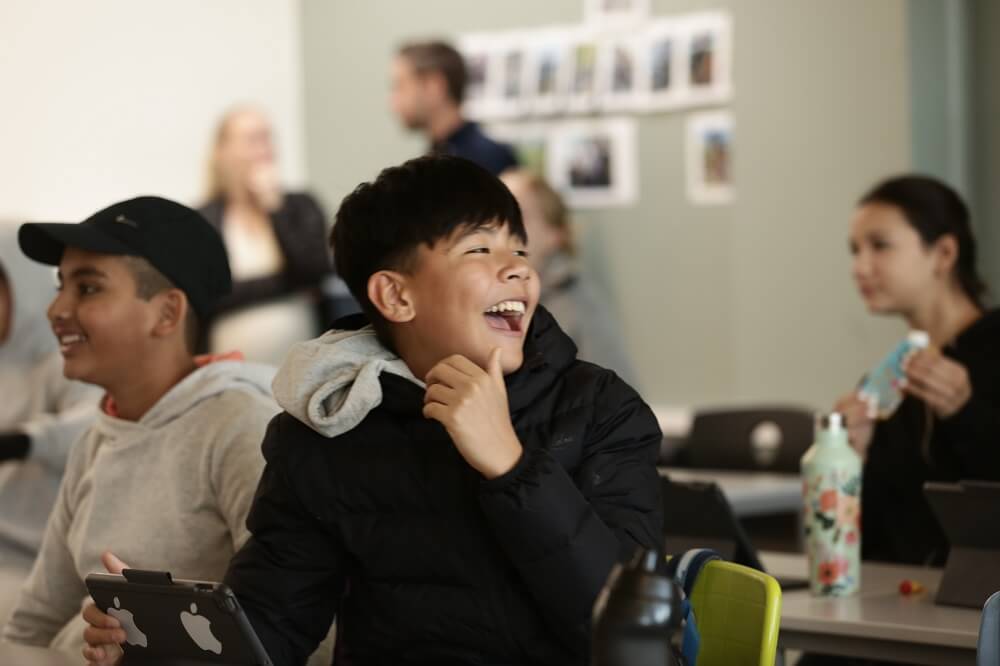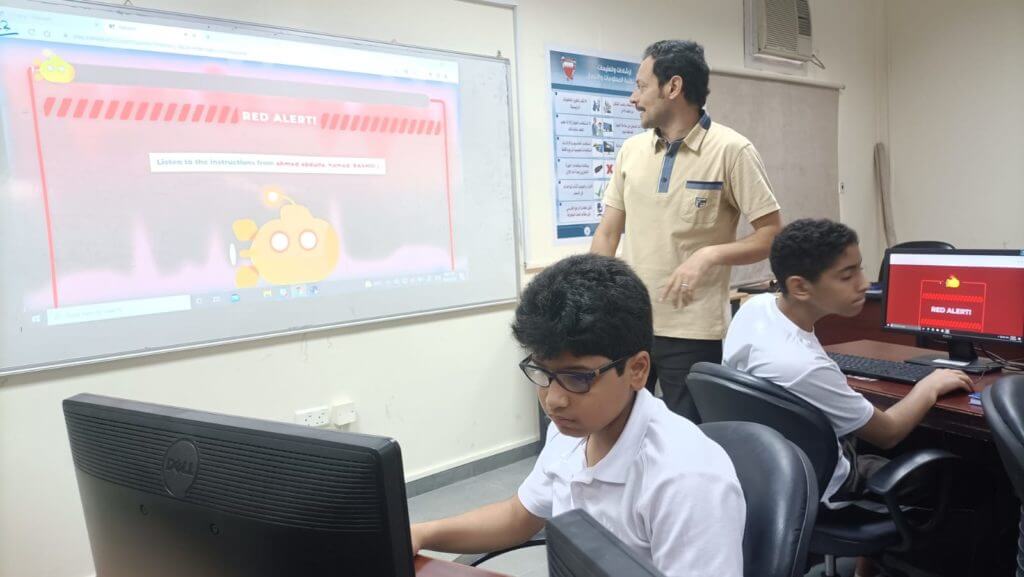We’ve all been there: delivering carefully crafted lessons, only to be met with a sea of neutral or even bored expressions. As educators, we strive for moments where our students are not just present in terms of attendance, but truly present – ready to learn. But how do we consistently ignite that spark?
While there’s ample evidence highlighting high student engagement when using Kahoot!, often based on surveys or students’ self-reports, a recent study took a different route. Researchers went beyond self-reports to directly analyze facial expressions through specialized software, unmasking the emotional impact of different teaching methods utilizing digital media. This research offers a unique lens into the topic of engagement, allowing us to see how learning environments influence student emotions.
The findings consistently show that when it comes to sparking joy and fostering active participation, one platform makes faces light up: Kahoot!.

Measuring student engagement with facial expressions
So, how does one “unmask” emotions in a learning environment? The study, “Analysis of Learners’ Emotions in E-Learning Environments Based on Cognitive Sciences,” was led by Dr. Farrokhnia of University of Twente, Netherlands. Dr. Farrokhnia and his colleagues examined the facial expressions of undergraduate students as they engaged with three different methods of presenting educational content: presentation slides, educational video, and Kahoot!. Specialized software, FaceReader™, was employed to analyze the collected video data, classifying facial expressions of participants, including basic or universal expressions like happy, sad, angry, surprised, and scared, but also neutral and contempt.

FaceReader software was used to analyze participants’ facial expressions during different learning activities
The study observed that with presentation slides or video, students often exhibited a higher level of neutral emotions, alongside negative ones like sadness or anger. In contrast, the research revealed that Kahoot! elicited the highest average of positive emotions among students compared to the other two methods, indicating a more dynamic and emotionally rich learning experience. These findings align with broader research, including a recent meta-analysis that found Kahoot! boosts students’ engagement as well as studies showing Kahoot! lessens stress when it comes to assessment.
This is important because emotions have a direct impact on learning. Positive emotions, such as enjoyment, are believed to help students regulate their learning, while negative emotions, such as anxiety, may lead to dependence on external guidance and hinder the ability to acquire new knowledge. Engagement isn’t just about presence; it’s about emotional connection.
Dynamic interaction makes student “lean in”
Kahoot!’s success in eliciting positive emotions is due to a lot of factors. The catchy lobby music and bright visuals certainly create a distinct mood, but at the core, playing Kahoot! is about active participation. The game experience is designed to offer interaction on three levels:
- Content interaction
Kahoot! invites students to actively engage with the material, answering questions and making choices. This immediate feedback contributes to positive emotions in students and enhances their learning.
- Teacher interaction
Teachers can instantly see student responses and adapt their instruction based on real-time feedback, re-teaching concepts as they see fit and enhancing the learning process further.
- Peer interaction
The competitive and collaborative aspects of Kahoot! naturally foster peer interactions, creating a shared experience and a feeling of belonging. This social dynamic can be a significant source of positive emotions, increasing motivation and fostering a desire to learn.
Designing Kahoot! learning experiences
Designing a learning experience that promotes positive emotions and engagement isn’t accidental. It’s a deliberate process grounded in understanding how emotions influence learning. Benjamin Huynh-Kim-Bang, Game Design Lead at Kahoot!, explains what kind of engagement truly excites the team, and how it comes to life in Kahoot! game modes and features:
“When designing, it’s never about just slapping rewards onto a game. When we were building the Kahoot! game modes, we wanted them to be suited and rewarding for different kinds of players, making sure different learners are included. We also wanted to keep the feeling of ‘togetherness’, especially in the game modes where students are playing at their own pace.”

Regarding game modes like Submarine Squad, a favorite of many students, the goal was to create a collaborative game mode, where everyone contributes and feels like their effort is important for the team. Benjamin shares: “Submarine Squad is a little different from the rest because it’s built explicitly for real-time collaboration. We wanted the kids to look up from their devices, and listen to each other.”
In Submarine Squad, after answering questions, one or more of the students are randomly selected to be a captain, who then gives instructions to the other players. The game mode was released after COVID-19 restrictions, when students were returning to classrooms and reported feeling lonelier than ever. Benjamin adds:
“In many game modes, we envisioned students, after a Kahoot! was played and class was over, going to a classmate saying something like, ‘That was a great job during that game’ or ‘Wasn’t it funny when…’ and just start to build those connections further.”
The Kahoot! game modes are extensively tested in classrooms, ensuring they deliver on their promise of engaging and emotionally rich learning experiences.
Igniting learning, one smile at a time
The research consistently shows and confirms what educators instinctively feel. Kahoot! doesn’t just deliver content; it ignites emotions. By fostering dynamic interaction at all levels – content, teachers, and peers – the goal is to transform passive participants into active, emotionally engaged learners.
This understanding of emotional impact is important when considering learning tools and designing learning environments. Choosing activities, such as collaborative game modes that invite students to interact with the content and with each other positively, is a great way to bring smiles to your students’ faces. By creating positive emotional experiences in the classroom, educators can help students grow their love of learning—supporting students’ success throughout their school journeys and beyond.
Get started with the Kahoot! game modes and more tools to amplify student engagement and learning with Kahoot!+.




